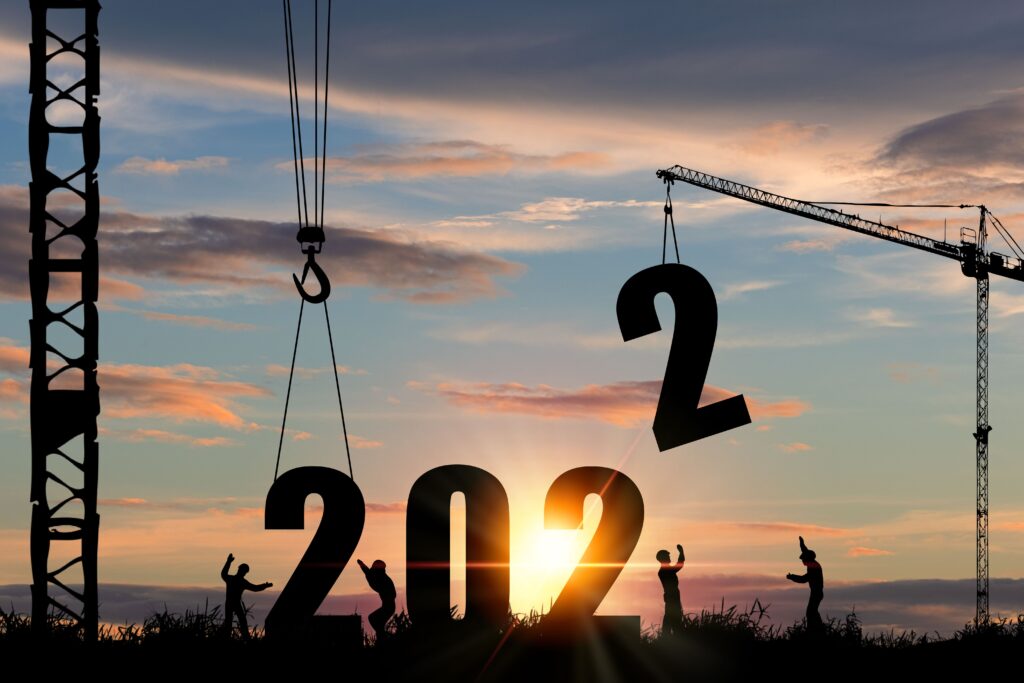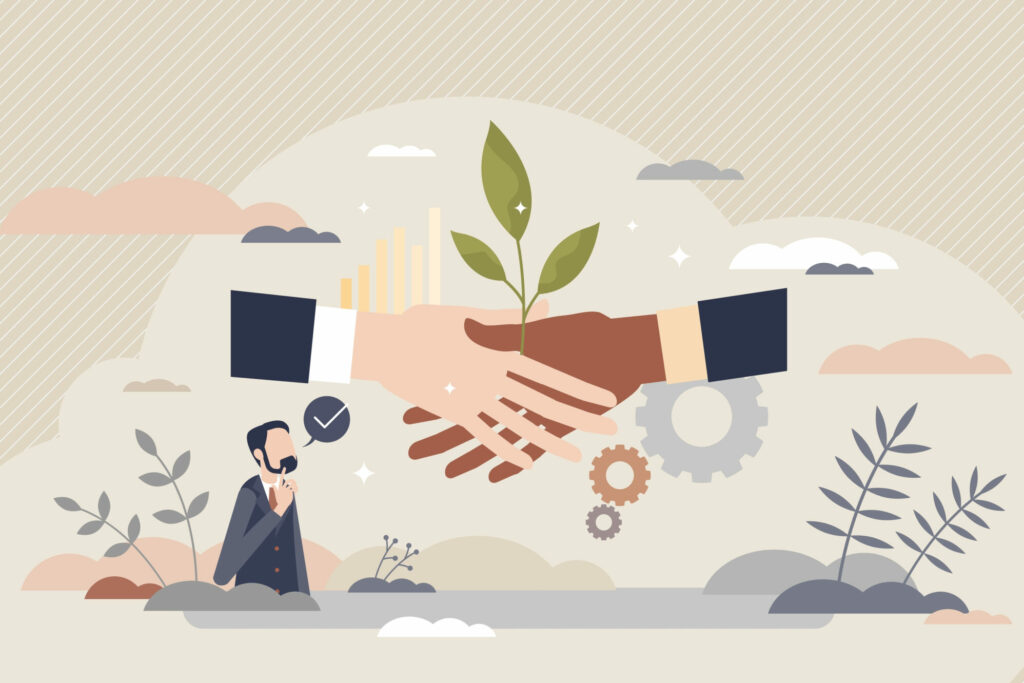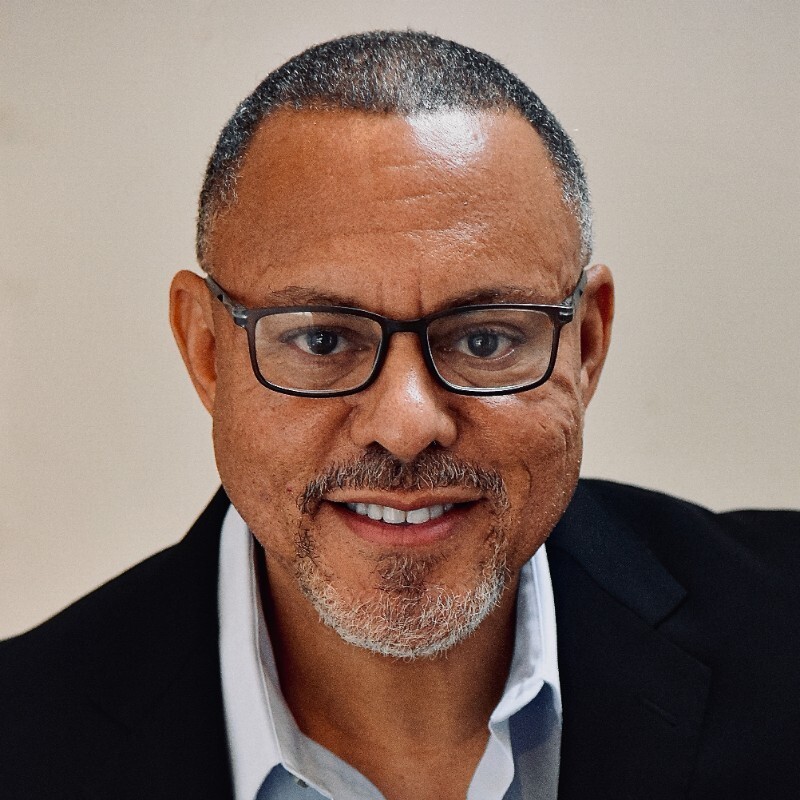
As the world redefines itself in the midst of a medical and environmental crisis, Tech For Good speaks to business leaders to find out how new technologies will shape the coming months and drive a more sustainable future.
The world is always in transformation; but even more so now as countries strive to define what a post-COVID future will look like. With rapid digitalisation and innovative ways of approaching healthcare, work, education, and sustainability, 2022 presents itself full of possibilities for growth – for those willing to embrace change.
Since the invention of the wheel, technology has always been a key driver of social transformation. Now, only eight years short of the deadline set by the United Nations to reach the Sustainable Development Goals (SDG), digitalisation initiatives are the protagonists of any major plan to address the many challenges that the world is facing, from the healthcare crisis to the climate emergency.
As the fourth industrial revolution unfolds under the eyes – and smartphone cameras – of the world, Tech For Good talks to business leaders about the changes that the next 12 months have in store. From huge companies such as Intel, Lenovo, and Capgemini to startup accelerators like Subak and non-profit organisations such as Nesta, industry stakeholders discuss the key learnings from the past two years and how the new technologies and ways of working will drive the creation of a more diverse, accessible, and sustainable world.
Work in the post-COVID world
“Almost two years on, what started as a response to a crisis has now become our opportunity to reimagine how we work,” says Trish Blomfield, Intel’s UK Country Manager. In 2020, Intel established flexible working arrangements as a response to COVID-19. But although these changes were originally envisioned as temporary, it is now clear many of them are here to stay.
With the COVID-19 pandemic ongoing, much of 2022 will still be defined by hybrid work and the changes and challenges of a global health crisis. The virus caused what a McKinsey report described as the “deepest economic disruption since World War II” – one from which the world has not yet recovered. In order to address this situation, companies globally have had to adapt and rethink their operating models and ways of working.

The 2020 lockdowns forced businesses to rapidly shift to online channels, automate production tasks, increase operational efficiency, and speed up decision making. As people transitioned to online work, companies digitised many activities 20 to 25 times faster than they had previously thought possible and the number of employees working from home regularly increased by 173% since 2005, according to Global Workplace Analytics.
Now, as businesses reshape their long-term strategies, the discussion around improving working conditions are expected to take centre stage.
“The past 20-odd months offer some clues on what the future of work may turn out to be like,” Blomfield says. “Earlier this year, we asked Intel employees what they thought about the future of work and 90% preferred a hybrid workplace where they would split their time between working remotely and being in the office; and that’s the direction that we’re going in as a company.
“What I hear from my colleagues is good riddance to rush-hour commuting and long live flexible working hours. I also hear renewed appreciation for human connections, both virtual and in-person, because that’s what drives innovation and makes work fun.”
The business changes motivated by the pandemic have led to the development of more flexible attitudes towards working and a sense of community in the face of adversity. If they could, 98% of people would choose to work remotely, at least part-time, for the rest of their careers, according to research by Buffer. This would have been almost unthinkable three years ago.
The many changes that the world has undergone over the past two years are a testament to society’s capacity for adapting. In the midst of a global talent shortage, hybrid and flexible present themselves as the key to ensuring employee satisfaction and productivity.


“I believe the future office’s primary function is to heal and to re-humanise the work environment and entrench a culture of compassion and individuality,” says Jamil El-Imad, CEO of tech startup Technovus and Chief Scientist at NeuroPro. “The deeper we connect – not only with our minds but with our hearts too – the more motivated and empowered we become to outperform.”
In order to be able to rapidly respond to the crisis and advance research, organisations and private citizens were able to come together to work collaboratively in new ways to speed up the innovation process; to great success.
Virologists, epidemiologists, public health officials and citizen scientists have been able to share their COVID-related discoveries through the open data repository NextStrain. The project allowed real-time information from labs around the world to be shared in one place, allowing scientists to track how the virus spread at an almost unprecedented scale.
“The pandemic has been tough,” says Kathy Peach, Director at Nesta’s Centre for Collective Intelligence Design. “But it has also thrust our collective intelligence under the spotlight, whether through neighbourhood WhatsApp groups or international scientific research. We’ve seen that at its best, collective intelligence can help us respond to crises with greater confidence, speed and cooperation.”
"What started as a response to a crisis has now become our opportunity to reimagine how we work" - Trish Blomfield
The COVID crisis has demonstrated how collective intelligence methods can help fill data gaps fast and tap into public appetite to contribute. The COVID Zoe symptom tracker app is a great example of this. Over 4.6 million people used it to track their symptoms and the data they generated became a valuable source of information to help scientists understand how the virus affects different groups of people. In addition, 327,000 gamers participated in Project Discovery grouping data from thousands of cell samples. Their work saved scientists an estimated 471 years of research.
The pandemic was a powerful reminder of the genuine existential risk posed by black swan events (low probability, high impact) and grey rhino events (high probability, high impact) and an impetus to prepare for if – or when – the next crisis occurs, be it social, medical or environmental.
“The world’s recovery from the pandemic presents a powerful opportunity to build a new society instead of restoring our old broken systems,” says Elodie Read, Programme and Community Partnerships Lead at Subak, the first global non-profit tech accelerator dedicated to combatting the climate emergency.
“One thing we’ve all witnessed is what can be achieved when a problem is treated with the urgency it warrants,” she says. “I think the time spent in lockdown made many people reconsider how we live our lives, the choices we make and what our priorities are. I see this as a critical precedent for global climate action, which must be our next urgent priority.”
From unprecedented mobility restrictions to enormous vaccination programmes and rapid digital transformation requirements, the pandemic challenged society to rise to the occasion – and it did. But it might all prove to be pointless without adequate solutions to the next crisis, which is bound to be climatic.
Changing with the climate
The past eight years have been the warmest since modern record-keeping began in 1880, according to NASA. As a result of global warming, 800 million people – 11% of the world’s population – are currently vulnerable to climate change impacts such as droughts, floods, heatwaves, and extreme weather events. Looking forward, climate action is no longer desirable, but absolutely indispensable.
Although experts like El-Imad believe that 2022 will only bring “more talk but little action,” others have hope in the promises of companies and public organisations, who have pledged to do better. So far, many nations have made commitments to end deforestation, curb methane emissions, and stop public investment in coal power, as they build towards their net-zero emission targets. But is it too little too late?
“2022 needs to be different,” Read says. “As we come out of the pandemic, we have an incredible opportunity and impetus for a just transition to a more sustainable society. Climate issues are critically important to a growing share of the population. Now, the UK and global governments must seize this moment to make more ambitious and justice-driven climate commitments.”
Although climate change is old news, it has been only in recent years that environmental concerns have broken into the mainstream. A recent report from YouGov shows that the environment is back to being one of the top priorities among the UK public. Moreover, the majority of citizens in 17 advanced economies demonstrated a willingness to change their living and working habits to combat the effects of global warming, as reported by the Pew Research Center. Instead of waiting for another global crisis, preventative measures could be the solution to the climate emergency.

Last year, the world’s leaders came together in Glasgow to design a plan to fight climate change. Although the conclusions of COP26 were disappointing for many, the conference did demonstrate a global commitment to rethinking environmental policies to drastically reduce CO2 emissions in the next eight years, starting right now.
“Progress was made at COP26: it’s now time for action,” says James Forrest, EVP, Global Industry Leader for Energy and Utilities at Capgemini. “We need to multiply the investments in energy, electrification and low carbon techs, from 2.5% of global world GDP to 4.5%.
“To solve the planet’s carbon problems, we need to track energy and carbon in the way we track finance. There are also many climate change hurdles yet to be overcome that require cross-sector effort, such as decarbonising transport, electrifying heating in homes, buildings, commercials and industry, and providing solutions to reduce energy demand while improving efficiency.”
Changing minds is a fundamental process of every full-scale transformation. Now that the global population has agreed on the need to decarbonise society, it is time for technology to step in and provide the tools required for the creation of a greener world.
What started as a response to a crisis has now become our opportunity to reimagine how we work" - Elodie Read
From renewable energy sources such as solar and wind to low carbon techniques like hydrogen, battery storage, nuclear and small modular reactors; there are plenty of alternatives to fossil fuels. Moreover, new technologies such as artificial intelligence and deep learning can also help power the green transition, as shown by the projects developed at Subak. Open Climate Fix – co-founded by former DeepMind engineer Dr Jack Kelly – is employing machine learning to forecast solar electricity generation to help optimise the grid and Climate Policy Radar is mapping and analysing the global climate policy landscape using machine learning and AI to support evidence-based policymaking.
Although customer demands and changing market trends are key drivers of sustainable development, public bodies will also need to step up in the fight towards climate change if any meaningful progress is to be made in 2022.
“We urgently need to increase and make more visible public engagement with net-zero,” Peach says. “In doing this, it creates the political will needed for potentially difficult policy decisions – and helps build the internal pressure needed within countries to raise their level of ambition when it comes to climate change. We also need to see new ways of driving large-scale, rapid collective action. Real-time data, more accessible models, and citizen deliberation and collaboration are all important enablers of this.”


Recently, Nesta funded an organisation called Umbrellium to design and run an experiment to help people take action to reduce air pollution. It found that when citizens were able to use technology to communicate and collaborate on actions, it led to saving four times more carbon dioxide emissions than the groups of individuals who didn’t collaborate.
Like COVID-19, climate change is not a national concern, but a global crisis. Therefore, experts agree that individual commitments must be underpinned by a common international agenda to address the danger that the environmental crisis poses to the world’s population. COP26 was a start, but there is still a long way to go before the planet is safe – starting with the next 12 months.
“Catastrophic climate change will not be prevented if our response is piecemeal, incremental or siloed,” Read says. “We need wholesale systemic change. Decarbonisation, large green jobs programmes, etc., are significant shifts that require proportionate involvement from governments, the private sector, multilateral institutions, nonprofit organisations, and so on. New technologies need to be developed, deployed, and scaled faster.
“Whether it’s by innovating and developing better tech, holding governments accountable, increasing public awareness, or driving behaviour change, we all have a crucial role to play in implementing the changes we need.”
Regulating seat belts and digital tools
In 1982, Michigan Representative. David Hollister received a letter likening him to Hitler after drafting a very controversial bill. It was Michigan’s first seat belt law.
Although seat belts were first invented in 1920, at the time Hollister drafted his bill fewer than 14% of the US population wore them regularly. Drivers complained they were uncomfortable and restrictive. Less than a year after the law was passed, this number rose to 60%. Now, 30 years later, the national seat belt use rate in the US is at 90.3%, saving almost 15,000 lives every year.
The public sector has always been slow at transforming, but challenges such as COVID-19 and climate change have forced public organisations to adapt. Looking ahead, regulatory decisions will be vital to ensuring that new technologies are equitable and ethical, as well as strategically deployed to make the most of what they can offer society.

“Technology plays a crucial role in humanity’s ability to prevent catastrophic climate change,” Read says. “However, technological development and deployment often raise ethical risks and challenges; and debates about equity and distribution. Governments need to be responsive to these rapidly changing technological landscapes and engage in these difficult conversations to prevent further inequity.”
When it comes to climate change, one piece of regulation that has long been discussed is the introduction of a carbon tax. This policy would have governments set a price that emitters must pay for each ton of greenhouse gas emissions they emit. Experts believe new regulatory systems that improve economic incentives for investment in sustainable developments are key to paving the way to net-zero.
Another aspect that has also caught regulators’ attention has been the lack of diversity in the technology industry. Although the move towards more inclusive workplaces has been an organic development that has gained traction over the last several years, public organisations are responsible for regulating technologies to ensure they are not reproducing bias and discriminating against minority communities.
Progress was made at COP26: it’s now time for action” - James Forrest
“The lack of diversity in tech is already well documented,” Peach says. “The consequences of this are already becoming obvious in the manifestation of technologies that have fundamental blind spots in relation to their broader social and ethical implications, such as Amazon’s discriminatory hiring algorithm. It’s a hard job for regulators, but collective intelligence methods could help inform how technology is regulated by helping to understand public views on socially acceptable uses and the values that need to be coded into emerging technologies.”
An example of how collective intelligence methods can help regulators tap into more diverse values that need to underpin emerging technology is Moral Machine. This online game was designed to understand the values that should be coded into self-driving cars. It presented players with scenarios about accidents involving driverless cars – with an emphasis on choices about who to save: humans or animals, men or women, old or young people. Nearly 40 million people from 233 countries actively participated and the data showed how values and decisions varied significantly between cultures.
“Progress starts with a commitment from leaders and a comprehensive strategy that encompasses improving the representation of minorities in the workforce, policies and initiatives targeting equity and inclusion, building a culture of trust and transparency, and strong communications, both internally and externally,” says Shobha Meera, Chief Corporate Social Responsibility Officer at Capgemini. “It’s a long-term effort, but one worth fighting for.”
There is no stopping industrial growth or artificial intelligence deployment, just as there wasn’t a way to keep people from driving cars. However, policy decisions can ensure that technological innovations are deployed in a safe and sustainable way, preventing the loss of human lives.
Entering the room where it happens
Despite the temptation of believing the contrary, machines are not infallible – they reproduce the biases and assumptions of the people that built them.
From facial recognition technologies to Amazon’s hiring AI tool, there are countless instances in which computers have been proven to discriminate against minority groups. In October 2019, researchers found that an algorithm used on more than 200 million people in US hospitals to predict which patients would likely need extra medical care heavily favoured white patients. The algorithm relied on a faulty metric for determining need that didn’t take into account the correlation that exists between race and healthcare expenditure.
The most effective way of ensuring that technologies are not biased is to increase the diversity of the teams that design them. However, despite growing industry commitments to address gaps, these still prevail. For example, the proportion of men and women being appointed directors of tech companies in the UK has remained almost exactly the same since 2000.
We, as technology companies, have a responsibility to ensure the products and services we provide are both inclusive and accessible to customers, while also building a workforce that is representative of the world we live in” - Calvin Crosslin
“While I think many corporations have made great strides in bringing inclusivity and accessibility to the forefront of their work, there is still plenty of room for improvement,” says Calvin Crosslin, Chief Diversity Officer at Lenovo and President of The Lenovo Foundation. “We, as technology companies, have a responsibility to ensure the products and services we provide are both inclusive and accessible to customers, while also building a workforce that is representative of the world we live in.”
Society has always been very diverse, but it has not been until very recently that technology companies have started to look the part. However, the job is not yet done. Currently, only 2.1% of Facebook’s technology positions are held by Black employees and women make up just 25% of computer science-related jobs in the US, according to the Pew Research Centre.
However, as the world redefines the new normal, experts are hopefuly about tech companies’ commitments to make their workplaces more diverse and inclusive. A global survey of over 3,000 business leaders commissioned by Intel found that over 60% of leaders felt that new ways of working, enabled by technology, contribute to a more inclusive experience for employees globally. Moreover, 89% of leaders indicated that technology will make achieving diversity and inclusion goals easier.
Despite its dangers, data can also be a powerful tool in the fight for more diverse workforces. Understanding the extent of the problem and the reasons behind the lack of inclusivity in the industry will be key to ensuring that discriminatory practices are not reproduced in the future.
“Intel is a data-driven company,” Blomfield says. “We measure and track inclusion, and our data does show improvements. Intel has global pay equity across its workforce when you take into account legitimate drivers of compensation; for instance, time in a particular grade.


“We like to celebrate successes, but the data is also there to show us where we have more work to do, as a company and as an industry. To continue the example, Intel UK has a gender pay gap as calculated by the UK government methodology which looks at the average pay of a woman compared with the average pay of a man across the whole Intel UK population. This is due to a lower representation of women in senior roles which is a challenge that Intel and the tech industry is trying hard to address.”
In the same way that emission targets are powering the way to a greener future, companies and public sector organisations must also make diversity and inclusion commitments. Last year, Google pledged to improve leadership representation of underrepresented groups by 30% by 2025 and Apple invested $30 million into its Racial Equity and Justice Initiative. Their results show the programme is working, with nearly 50% of its employees belonging to underrepresented groups.
Intel’s plan to address this issue includes a commitment to doubling the number of women and underrepresented minorities in senior roles and increasing the percentage of employees self-identifying as having a disability to 10% by 2030. In addition, Intel has joined the Alliance for Global Inclusion with the aim of bringing organisations together in an industry-wide commitment to and accelerating impact in diversity targets.
“Inclusion is now a real priority for governments, tech companies, consumers, and our society at large,” Meera says. “And while there is increasing recognition of the need and business case for inclusion and accessibility, and some progress, we still have a long road ahead.”
Inclusion is now a real priority for governments, tech companies, consumers and our society at large” - Shobha Meera
Evidence shows that diverse and inclusive workplace cultures are more creative, resilient, and impactful. They are also more successful. McKinsey reported that companies with high gender diversity on their executive teams were 25% more likely to have above-average profit. Moreover, internationally diverse boards, on average, raise 453% more investment than non-internationally diverse boards, according to Tech Nation.
The establishment of standards and processes is key to the prioritisation of long-term inclusion. This includes putting diversity or inclusion approvals in place and questioning how products are received or used by people of different genders, races, abilities, and orientations. Lenovo has created the position of Product Diversity Office to ensure diverse teams are represented in the product planning and execution phases.
“Reducing bias begins with ensuring the teams behind the products and solutions are diverse in experiences, backgrounds, perspectives, and abilities,” Crosslin says. “Workplaces can truly become more diverse and inclusive once these two ideas are considered foundational values of a company.
“We’ve seen first-hand how technology can be a powerful enabler of diversity and inclusion, especially as it relates to design and development. When companies integrate it into their processes, products, and services, it allows for accessibility and innovation to flourish. These meaningful steps not only drive positive change internally, but can also build a greater, more equitable society.”
However, progress doesn’t only happen top-down. There are plenty of crowdsourcing initiatives that aim to create more representative training datasets for machine learning models. A great example is Mozilla’s Common Voice project, which is creating the world’s largest open dataset of diverse voice recordings spanning different languages, demographic backgrounds and accents. It aims to stimulate the development of AI voice assistants that are able to serve the needs of more diverse communities.
“We think collective intelligence can be used across the AI development cycle to reduce bias through a process we call ‘Participatory AI’,” Peach says. “Put simply, this means involving a wider range of stakeholders – including affected communities – in the design, development and auditing of AI systems.”
From increasing the diversity of design teams to testing products with diverse users, there are many things organisations can do to reduce the risk of data biases. But they will require resources and a real commitment to making a change. Going into 2022 and beyond, positive inclusion experiences, when combined with the right technology, will strive to create better products and workplaces.
The digital promise
Technological developments have always shaped societies, but never more so than in the last few decades. Connectivity is one clear example of this. Since the invention of mobile phones in 1973, the number of mobile connections has surpassed the size of the global population. Today, there are almost 2.46 billion more mobile connections than people, making it the fastest-growing human-made technology phenomenon in history.
The COVID-19 pandemic has drastically accelerated the adoption of digital technologies. During the first three months of the lockdown period, UK SMEs reportedly underwent three years’ worth of innovation. These changes were necessary to address the health crisis while continuing business operations. However, companies expect them to outlive the pandemic, with over 90% of innovative firms reporting an intention to make digital technologies a fundamental part of the plans for the new normal, according to a report by Be The Business.

Technological developments have always shaped societies, but never more so than in the last few decades. Connectivity is one clear example of this. Since the invention of mobile phones in 1973, the number of mobile connections has surpassed the size of the global population. Today, there are almost 2.46 billion more mobile connections than people, making it the fastest-growing human-made technology phenomenon in history.
The COVID-19 pandemic has drastically accelerated the adoption of digital technologies. During the first three months of the lockdown period, UK SMEs reportedly underwent three years’ worth of innovation. These changes were necessary to address the health crisis while continuing business operations. However, companies expect them to outlive the pandemic, with over 90% of innovative firms reporting an intention to make digital technologies a fundamental part of the plans for the new normal, according to a report by Be The Business.
With the world still facing climate and healthcare crises, experts have predicted that digital transformation will be the protagonist of 2022, defining the future of work, health, education, and the environment.
Some of the most important challenges we face in society rely on collective actions and decisions in the face of competing priorities. It is time we invested in the technology that can help us collaborate better to improve our chances of tackling these problems” - Kathy Peach
Society was already becoming increasingly digital well before the disruptions of the past two years,” Blomfield says. “And then, with COVID-19, the pace of digitalisation has massively accelerated. In the world of work, the response to the pandemic compressed a decade’s worth of change into months. Who would ever have thought that most of Intel’s 116,000-strong global workforce would transition to working from home in a matter of days?”
In addition to transforming business operations, digital solutions also have a huge potential to create social good. Over the next decade, digitally-enabled platforms are estimated to create 70% of new economic value. Moreover, according to a United Nations report, technology can also become “the great equaliser” by enhancing connectivity, financial inclusion, and access to trade and public services.
There are plenty of ways in which technology can power sustainable development. From citizens’ insights to grassroots solutions, data from mobile phone companies to satellite imagery and AI, new smart resources are being harnessed by organisations around the world to understand complex problems and find new solutions to global challenges. Looking ahead, experts expect these trends to accelerate dramatically.

“I think we’ll see much more experimentation with technologies that help to drive positive collective behaviours – the opposite of some of the negative effects we’re seeing on social media right now,” Peach says. “I think we’ll also see much more of technologies that try to make the most of human-AI cooperation, particularly to help improve group decision-making.
“Some of the most important challenges we face in society rely on collective actions and decisions in the face of competing priorities. I think people are starting to realise that it is time we invested in the technology that can help us collaborate better to improve our chances of tackling these problems”.
A collaboration between Nesta’s Centre for Collective Intelligence Design and the UNDP Accelerator Labs is the first attempt to map how diverse collective intelligence approaches are being used to speed up progress on the SDGs. One of these ways is by anticipating, monitoring and responding to systemic risks by testing out new ways of combining local collective intelligence and predictive analytics to improve the speed and effectiveness of responses to natural disasters and conflicts.
Nesta’s initiative builds on projects such as Sentry Syria, which captures sensor data and reports from community volunteer plane spotters who live near Syrian conflict zones. Using AI, it is able to predict when airstrikes will occur and warn civilians. During 2018, it is estimated that the initiative led to a 20-30% reduction in casualty rates in several areas under heavy bombardment. Digital tools have been proven to have enormous potential for good – for those able to access them.
“Technology has become even more integral to our lives: keeping us connected at work, supporting remote learning but, more importantly, connecting us to our loved ones,” Crosslin says. “But, while many of us have benefited from technology, for those without access to PCs or the internet, the digital divide widened.”
With less than a decade left until the 2030 deadline, digital technologies will be key to realising the United Nations’ SDGs. However, this would only be possible if access to these solutions is available worldwide.
As the world becomes more digitally dependent, almost half the world’s population – 3.7 billion people – is still offline. The majority of them are women, and most live in developing countries. This has meant that over the last two years of a global pandemic, those without internet access have been unable to benefit from remote education, work, or health services.

“As the world gets increasingly digital, the divide between the digital haves and have-nots is widening,” Meera says. “We operate with the firm belief that as a leader in digital transformation, it is our responsibility to address this digital divide and ensure that technology is leveraged and applied to address key societal challenges.”
Technology is a tool that can both reduce and widen inequalities. It is up to public and private organisations – as well as consumers worldwide – to determine how to make the most of these innovations that are disrupting the industry and ensure they are used to power a better future.
We’re already into the year 2022, and it comes with as many challenges as it does opportunities. As the world comes out of a pandemic having developed new technologies and ways of working, it is now the time to utilise those learnings in the building of a more sustainable and diverse society that is ready to take on the coming crisis, be it social, economic, medical or environmental.
Looking forward, change is an absolute certainty, but progress has to be fought for. The future is unknown, but it will undoubtedly be digital.



